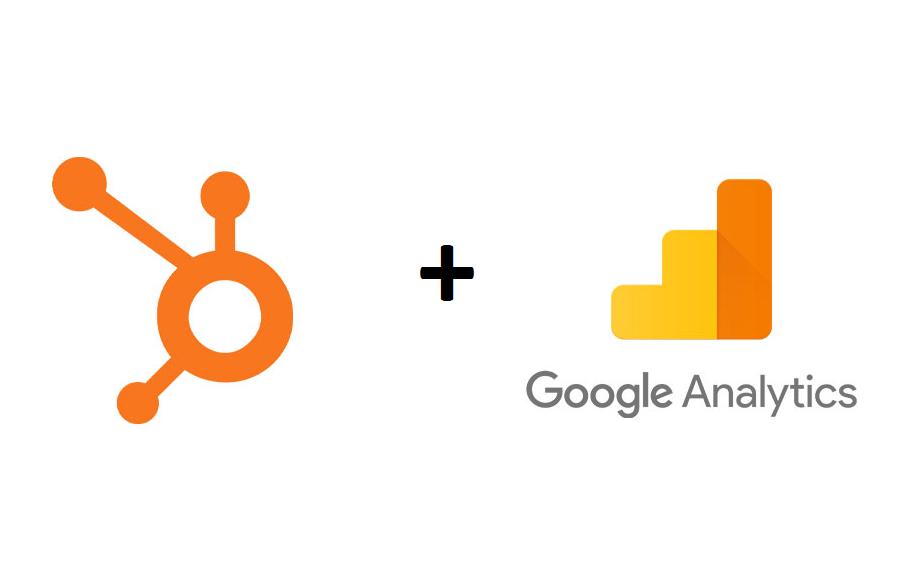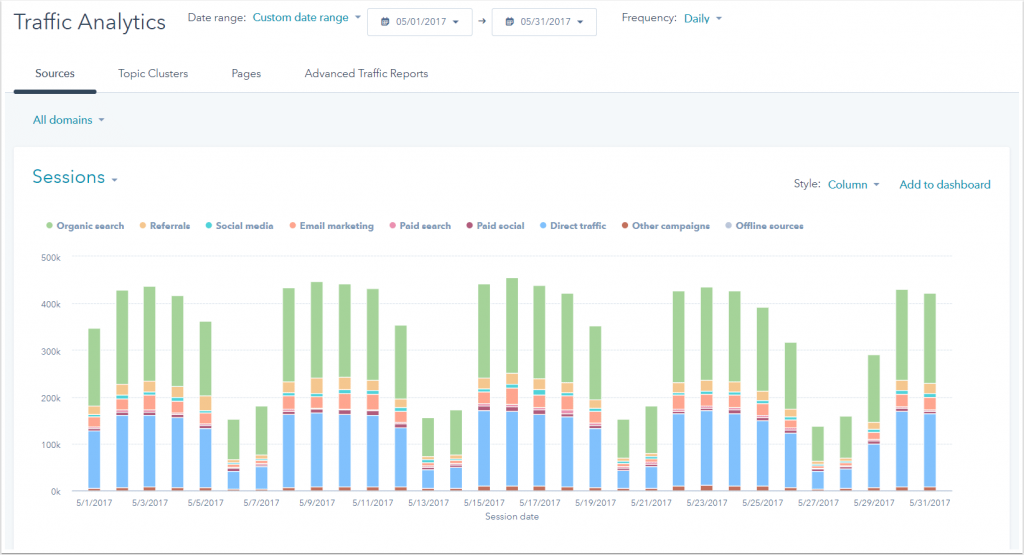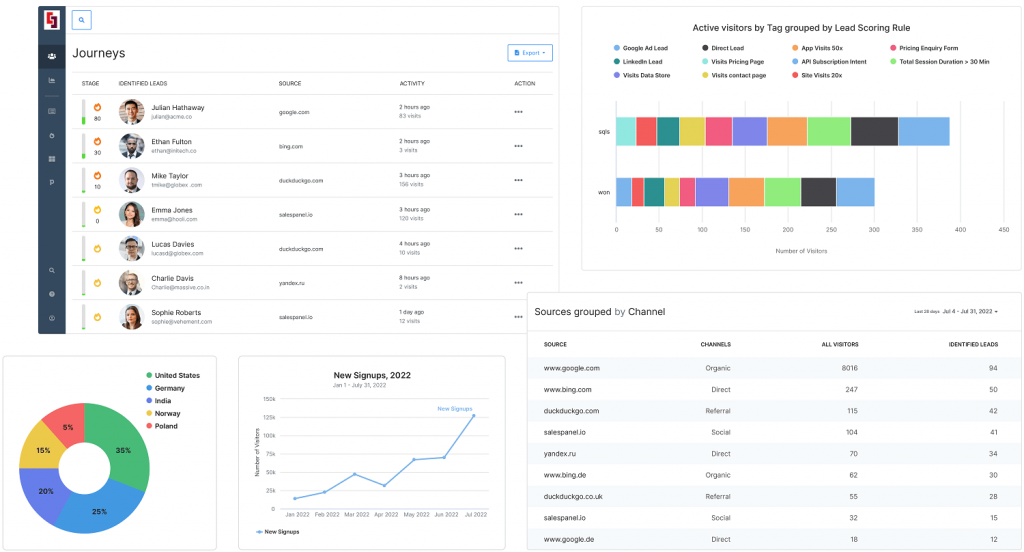Updated on 25th June, 2024
In today’s highly competitive business landscape, data-driven marketing strategies are critical to achieving success. Two of the most powerful tools that businesses can utilize to gain valuable insights and optimize their marketing efforts are HubSpot and Google Analytics. HubSpot is an all-in-one inbound marketing, sales, and customer service platform that enables businesses to attract, engage, and delight their customers. Google Analytics, on the other hand, is a comprehensive web analytics service that provides valuable insights into user behavior, website performance, and marketing effectiveness.
However, to fully harness the power of these two platforms and make the most of their features, integrating them is essential. The integration of HubSpot and Google Analytics not only streamlines workflows and enhances data analysis but also ensures a seamless and personalized customer experience. By combining the strengths of both platforms, businesses can derive actionable insights, make informed decisions, and ultimately improve their return on investment (ROI).
This comprehensive guide aims to walk you through the process of integrating HubSpot CRM and Google Analytics, highlighting the benefits of this integration, setting up and configuring the integration, exploring the key features of this combined solution, and sharing best practices and advanced techniques for maximizing its potential. By the end of this guide, you will be well-equipped to leverage the power of HubSpot and Google Analytics integration to drive your business forward.

Limitations of Hubspot’s Analytics
It’s not all fun and games. There are some limitations with Hubspot’s Analytical solutions. Let’s have a look!
While there are plenty of reporting dashboards available in HubSpot, many of them are locked behind a paywall. This means you have to invest a hefty amount when it comes to advanced reporting tools, like HubSpot’s marketing attribution features.
Let’s discuss the limitations of HubSpot’s analytics below.
1. Expensive Paywall For Key Features
As we previously indicated, a paywall obscures many of HubSpot’s capabilities. The prices jump up steeply as you go higher and you go from $50 to $800+ in no time. Custom reports, for instance, are only accessible with the Marketing Hub’s Professional plan.
The monthly starting price for this plan is $800. However, multi-touch revenue attribution—necessary to fully comprehend the return on investment from your marketing—is limited to the $3,600/month Enterprise plan.
GA4 has many great features—even in its free version.
2. Limited Data Granularity
HubSpot’s analytics may lack the detailed data granularity provided by GA4. While HubSpot excels at tracking marketing and sales metrics, it may not offer as in-depth insights into user behavior on your website, such as event tracking, user engagement, and flow analysis.
GA4 provides more granular data, allowing for a deeper understanding of how users interact with your site.
3. Custom Reporting Constraints with Attribution
HubSpot’s reporting capabilities, though robust, can be less flexible compared to GA4. HubSpot offers pre-built reports and dashboards tailored to marketing and sales, but creating highly customized reports to track specific user interactions or advanced eCommerce metrics can be challenging.
GA4 offers extensive customization options, enabling the creation of bespoke reports that cater to unique business needs.
4. Limited User Segmentation
HubSpot provides useful segmentation features but may not be as advanced as GA4’s. GA4 allows for detailed user segmentation based on a wide range of parameters, such as user behavior, demographics, and custom events.
This level of segmentation can help in creating highly targeted marketing strategies and understanding user journeys in more depth, which HubSpot might not fully support.
Results You Can Get by Integrating Hubspot and Google Analytics
Integrating HubSpot and Google Analytics provides businesses with numerous advantages that can significantly impact their overall marketing strategy and customer experience. Here, we will discuss four primary benefits of this integration:
A. Enhanced data tracking and analysis
By combining the data from both HubSpot and Google Analytics, businesses gain a deeper understanding of customer behavior, preferences, and patterns. This wealth of information allows marketers to make more informed decisions, tailor their campaigns, and ultimately drive better results. The integration enables you to:
- Track user interactions across multiple channels and devices.
- Identify content that resonates with your target audience.
- Monitor and analyze user engagement metrics, such as bounce rates, time on site, and pages per session.
B. Improved marketing strategy and ROI
When you accurately credit campaigns for website leads, you can better understand the effectiveness of your marketing efforts. This enables you to allocate resources more strategically, optimize your marketing mix, and ultimately improve your ROI. The integration allows you to:
- Identify high-performing campaigns and channels.
- Evaluate the impact of different marketing activities on lead generation and conversions.
- Optimize your marketing budget by investing in the most effective strategies.
C. Personalized customer experience
Integrating HubSpot and Google Analytics helps you create a more personalized customer experience by leveraging data from both platforms. You can segment your audience based on their behavior, preferences, and interactions, allowing you to tailor your marketing messages and offers. This leads to increased customer satisfaction, loyalty, and lifetime value. The integration enables you to:
- Create targeted and personalized marketing campaigns.
- Deliver relevant content and offers to the right audience at the right time.
- Improve customer segmentation for more effective communication.
D. Streamlined workflows and increased efficiency
The integration of HubSpot and Google Analytics helps businesses streamline their workflows by centralizing data and reducing the need for manual data consolidation. This increased efficiency allows your marketing and sales teams to focus on more strategic tasks and make data-driven decisions more quickly. The integration allows you to:
- Automate data synchronization between HubSpot and Google Analytics.
- Minimize manual data entry and the potential for human error.
- Access a unified dashboard for easy monitoring and analysis of your marketing performance.

Setting up the Integration
Integrating HubSpot with Google Analytics is a straightforward process that can be accomplished without the need for plugins or additional tools. Before diving into the steps, ensure you have the following prerequisites:
A. Prerequisites
- An active HubSpot account
- A valid Google account
- A Google Analytics 4 Measurement ID (“G-” ID)
Note: You can use a Google tag ID during setup. You may receive a HubSpot error message; however, the setup will save correctly.
B. Configuring the Integration
Once you have the prerequisites in place, follow these steps to integrate your HubSpot account with Google Analytics:
Adding Google Analytics tracking code to HubSpot
a. Sign in to your HubSpot account.
b. Click the settings gear icon on the top toolbar.
c. On the left side panel, click “Website.”
d. Select “Pages” from the “Website” dropdown menu.
e. Choose a domain from the “Choose a domain to edit its settings” dropdown menu.
f. Click on the “Integrations” tab below the dropdown menu.
g. Check the “Integrate with Google Analytics 4” checkbox.
h. In the box provided, enter your Google tag ID (Measurement ID starting with “G -“).
i. Click “Save.”
Enabling HubSpot tracking in Google Analytics
Data collection should begin within 30 minutes of following the Google Analytics tracking code set up in HubSpot. To verify that you’re receiving data from HubSpot, use the Realtime report in your Google Analytics account. If data is being collected, you’ll see visitor activity from your HubSpot pages in the report.
Customizing tracking settings for optimal data collection
For more accurate data collection and to ensure you’re capturing the most relevant information, consider customizing your tracking settings in both HubSpot and Google Analytics. This may include adjusting settings for tracking specific user interactions, events, or campaigns. Be sure to explore the available options on both platforms to create a customized tracking setup that meets your particular business needs.
With these steps completed, your HubSpot account should now be integrated with Google Analytics, enabling you to take advantage of the combined power of both platforms for enhanced marketing insights and performance.
Key HubSpot and Google Analytics Integration Features
By integrating HubSpot with Google Analytics, businesses can access a range of powerful features that provide valuable insights into website performance, user behavior, and marketing campaigns. Here are some key features offered by the integration:
A. Tracking website traffic and user behavior
- Ability to track visitors and sync to your HubSpot CRM using Google Analytics: This integration allows you to track individual website visitors and their actions, while also syncing this data with your HubSpot CRM. This enables you to create detailed user profiles and gain a better understanding of your audience’s preferences and behavior.
- Integration with HubSpot-hosted content by adding a Google Analytics Measurement ID: By adding your Google Analytics Measurement ID to your HubSpot-hosted content, you can track the performance of your landing pages, blog posts, and other content assets. This allows you to identify high-performing content and tailor your marketing strategy accordingly.
B. Analyzing marketing campaigns and channels
- Option to add your Google Analytics tracking code snippet to the site header HTML for your domain: This integration feature enables you to track the performance of various marketing channels, such as social media, email, and paid advertising. By understanding which channels drive the most traffic, leads, and conversions, you can optimize your marketing strategy for better results.
C. Measuring and optimizing conversion rates
- Track and analyze conversion rates for different user segments, campaigns, and content: The integration of HubSpot and Google Analytics allows you to measure the effectiveness of your marketing efforts in driving conversions. By analyzing conversion rates across different user segments, campaigns, and content, can help you can identify areas for improvement and optimization.
- Access detailed funnel reports to understand user behavior throughout the conversion process: Gain insights into how users interact with your website and content at different stages of their journey. This information helps you identify potential roadblocks and opportunities for improvement in your sales funnel.
D. Monitoring and evaluating website performance
- Access a comprehensive range of website performance metrics: With the integration of HubSpot and Google Analytics, you can monitor essential website performance metrics, such as page load times, bounce rates, and user engagement. This information can be used to identify areas for improvement and enhance the overall user experience on your website.
- Evaluate the impact of website changes on user behavior and conversions: Tracking website performance before and after making changes can help you assess the impact of these changes on user behavior and conversions. This helps you make data-driven decisions when optimizing your website for better performance and user experience.
These key features of the HubSpot and Google Analytics integration empower businesses with the necessary insights to optimize their marketing strategies, improve website performance, and enhance the overall customer experience.
Troubleshooting Issues of Hubspot’s Integration with Google Analytics
Even with a smooth integration, common problems can still occur and need to be troubleshooted. Here are some issues that may occur when you integrate HubSpot with GA4 for analytics and reporting:
A. Data Discrepancies
These include differences in reported metrics between HubSpot and GA4, such as page views, sessions, or conversion rates.
Ensure consistent tracking parameters across both platforms. Double-check that both HubSpot and GA4 are using the same UTM parameters for campaigns. Regularly audit your tracking codes and configurations to ensure they are correctly implemented and aligned.
B. Missing or Incomplete Data
Incomplete data in GA4 after integration, such as missing events or user interactions not being tracked is pretty common.
Verify that all necessary events and user interactions are set up correctly in both HubSpot and GA4. Use Google Tag Manager to manage and test your event tracking configurations. Ensure that all necessary tags and triggers are defined and firing correctly.
C. Delayed Data Sync
Data synchronization between HubSpot and GA4 may be delayed, leading to outdated or incomplete reports.
Check the integration settings to ensure they are configured for real-time data syncing. If delays persist, consult the documentation for both HubSpot and GA4 to optimize the sync settings. Consider using tools like Zapier to facilitate more efficient data transfers.
D. Event Tracking Conflicts
These include conflicts between HubSpot and GA4 event tracking, such as duplicate events or incorrect event categorization.
Standardize your event naming conventions and ensure consistency across both platforms. Use a central document to map out all events and their corresponding parameters in HubSpot and GA4. Regularly test your events using debugging tools provided by respective platforms.
Need proper customer journey tracking?
Salespanel offers a valuable alternative to Google Analytics and Hubspot Marketing Hub, focusing on tracking customer journeys and integrating seamlessly with HubSpot at much lower costs. Key benefits of using Salespanel include:
Comprehensive Customer Journey Tracking: Salespanel tracks the entire customer journey, connecting individual contacts on HubSpot, and providing detailed insights into user behavior and preferences.
Affordable Segmentation and Lead Scoring: Salespanel offers lead segmentation and scoring capabilities at a much lower cost compared to HubSpot Marketing Hub, enabling businesses of all sizes to effectively identify and prioritize leads.
Marketing Attribution Solution: With the removal of first-click attribution in Google Analytics 4, Salespanel can assist in marketing attribution, helping you understand which channels and campaigns are driving conversions and, thus optimize your marketing efforts accordingly.
Salespanel’s integration with HubSpot delivers a cost-effective solution for tracking customer journeys, segmenting and scoring leads, and providing marketing attribution insights. By leveraging Salespanel, businesses can make more informed marketing decisions and drive growth.

Conclusion
The transition to Google Analytics 4 and the integration of HubSpot and Google Analytics provides businesses with powerful tools to drive data-driven marketing strategies, optimize website performance, and enhance customer experiences. This guide has covered the benefits of integrating these platforms, the setup process, key features, and Salespanel as an alternative for comprehensive customer journey tracking, segmentation, and lead scoring.
Leveraging the combined power of HubSpot, Google Analytics, and Salespanel, businesses can gain valuable insights into user behavior, preferences, and patterns. This enables them to make informed decisions, tailor their campaigns, and ultimately drive better results. Embrace the transition to Google Analytics 4 and harness the full potential of these platforms to drive your business forward.



